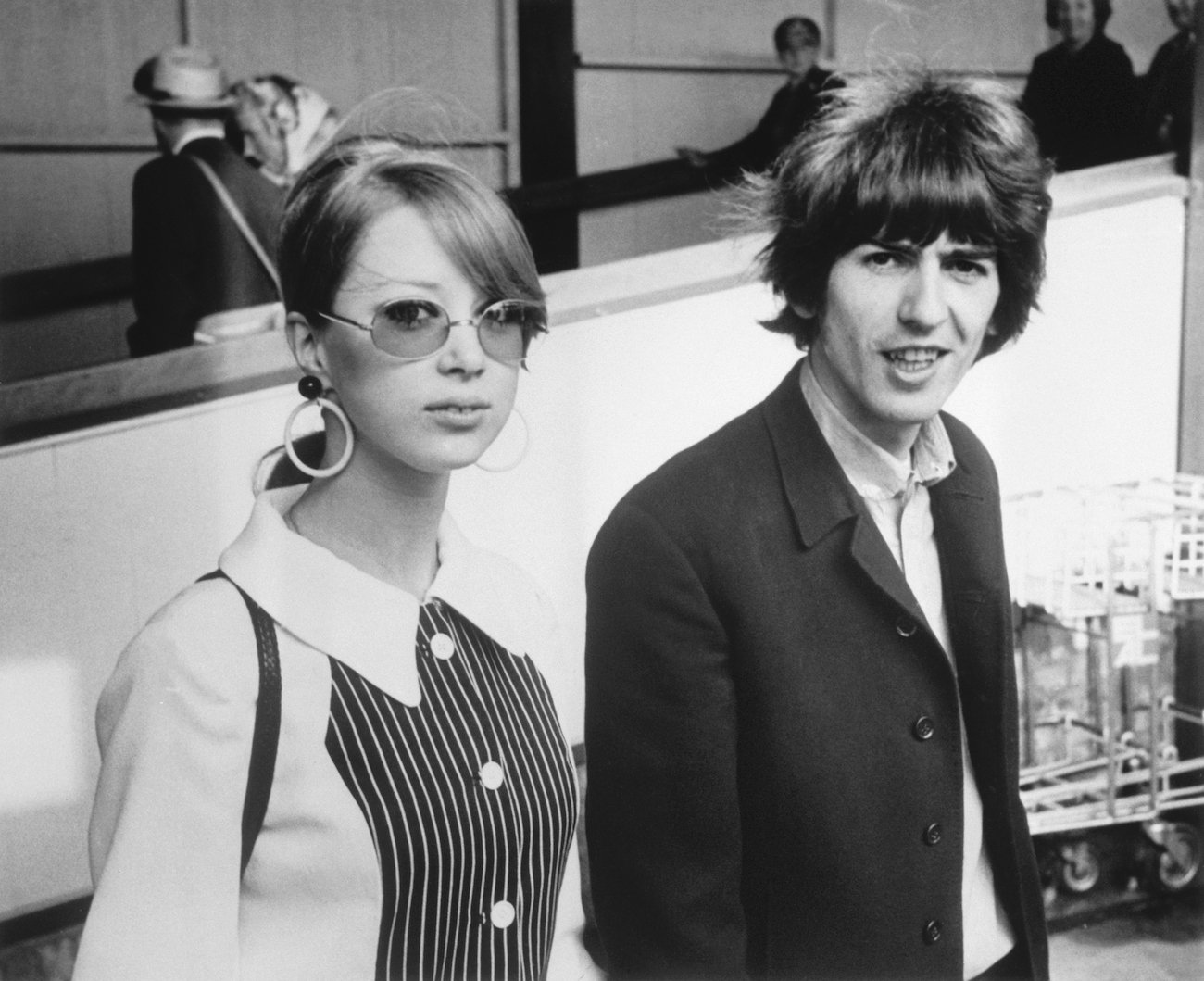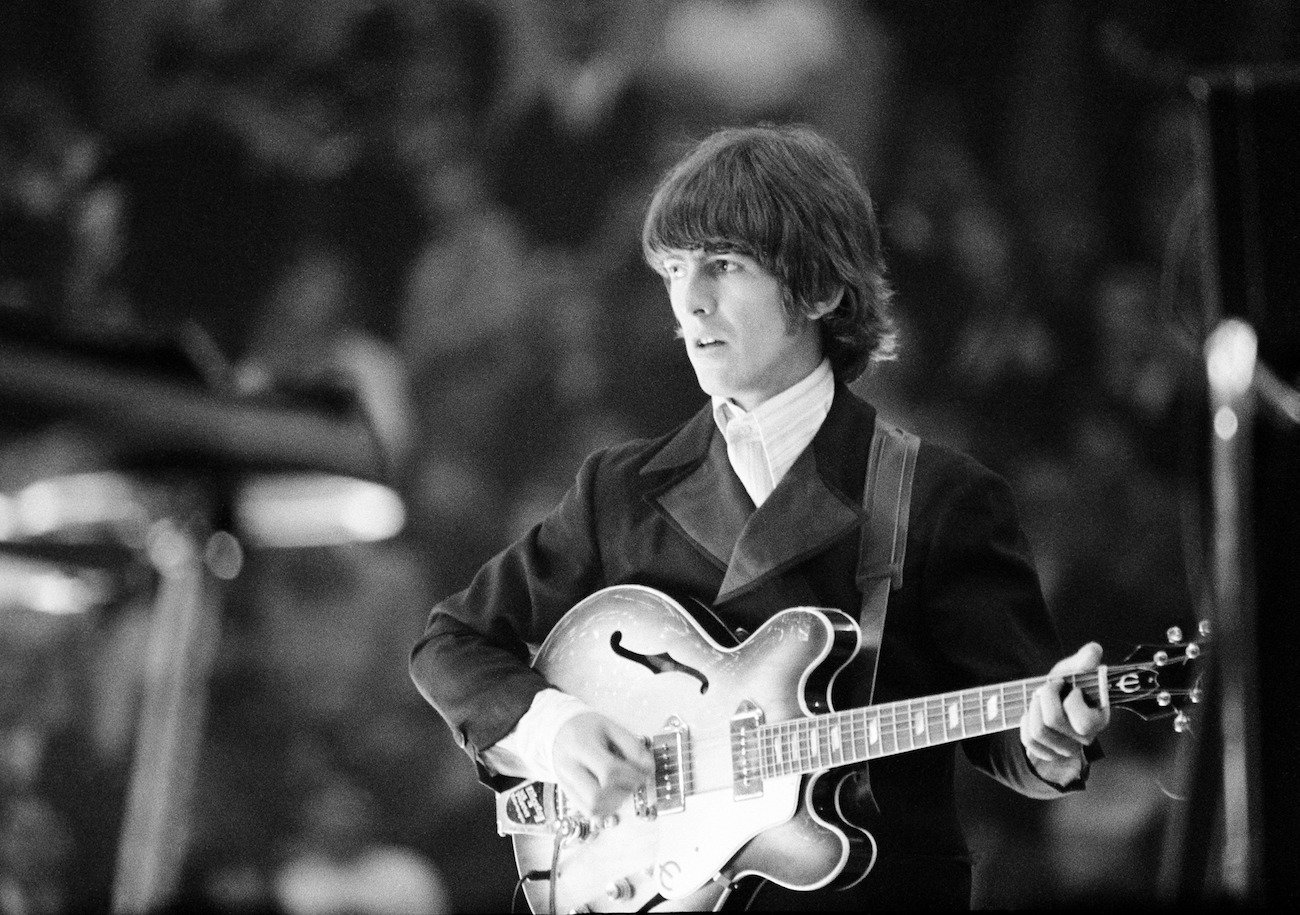
The Only Album George Harrison Took With Him on His First Trip to India
George Harrison only took one album with him during his first trip to India in 1966. The six-week trip changed his life forever, but that one album kept him tethered to the Western world. Without it, George would’ve had a harder time returning from the land of the Gods.

George Harrison wanted to learn more about India after meeting Ravi Shankar
In 1965, George and his fellow Beatle, John Lennon, took LSD for the first time. George often said taking the hallucinogen opened his mind to God-consciousness. During his trip, he heard the words “Yogis of the Himalayas.” However, George didn’t exactly know what it all meant.
Meeting his musical guru, Ravi Shankar, came at a perfect time in George’s life.
According to Joshua M. Greene’s Here Comes The Sun: The Spiritual And Musical Journey Of George Harrison, George explained, “Nothing was giving me a buzz anymore. I just thought, well, I’m looking for something really, really beyond just the ordinary, the mundane. . . . I wanted somebody to impress me, I didn’t expect it to be this little Indian man. But, you know, good things come in small packages.”
Shankar began teaching George the sitar immediately after they met. The famous sitarist also gave the Beatle religious texts so he could learn that God is sound.
Shankar’s lessons struck a chord somewhere deep inside George. He was forever changed and could have left behind everything in his life to learn more. “I felt I wanted to walk out of my home that day and take a one-way ticket to Calcutta,” George said. “I would even have left Pattie behind in that moment.”
George Harrison took Bob Dylan’s ‘Blonde on Blonde’ to India
It became evident to George that he needed to see the place where the music and spirituality he loved came from. Shortly after The Beatles’ last concert, George, his wife, Pattie Boyd, Shankar, and his assistant, departed for India.
Initially, no one in Bombay recognized him, but that quickly changed. So, George and everyone took a train to one of the holiest and most secluded parts of India, Kashmir, “the retreat of royalty, an idyllic land of fruit orchards and flowering gardens.” They stayed in Srinagar, at the bottom of the Himalayan mountains. Suddenly, George seemed to be living out his LSD-induced thought. He was seeing where the ancient yogis of the Himalayas lived.
On their boat house, George “looked out on the Himalayas rising in the distance and savored freedom from life as a Beatle,” Greene wrote. Every morning he did yoga exercises and practiced the sitar, eyes shut. Then, he read books on “self-realization and in the peace and calm of an ancient land discovered teachings that would permanently change the course of his life.”
George read Raja-Yoga by Swami Vivekananda, which said, “If there is a God we must see Him . . . otherwise it is better not to believe.” He also read Autobiography of a Yogi by Paramahansa Yogananda.
Later, George said, “I’d heard stories about men in caves up in the Himalayas who are very old and wise, and about people who could levitate . . . mystic stories that had permeated my curiosity for years.”
George might’ve fallen down a spiritual rabbit hole during his trip to India, but he was never far from music. The only thing that kept George connected to the Western world was one album.
In 1977, George told Crawdaddy that the only record he took with him, along with all his Indian records,
was Bob Dylan’s Blonde on Blonde. Besides Shankar, Dylan was doing things in music that truly impressed George.
Music played a big part in George’s spiritual journey
It was good that George brought Blonde on Blonde with him to India. One of the most significant things he learned during his trip was that God is sound. One could reach Him by playing the right chords.
“The way for him to reach his inner self, it seemed, was the same way he had reached his outer self—through music,” Greene wrote.
“Our tradition teaches us that musical sound and the musical experience are steps to the realization of the self,” Shankar explained. “The highest aim of our music is to reveal the essence of the universe it reflects, and ragas are among the means by which this essence can be apprehended.”
When George returned to London, he wasn’t entirely pleased with having to make the same old music with The Beatles. However, he kept what Shankar taught him at the forefront of his mind. He wasn’t making the music he wanted to, but at least it brought him closer to God.


